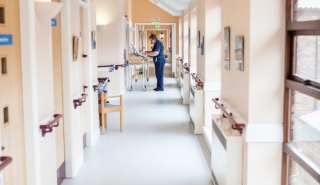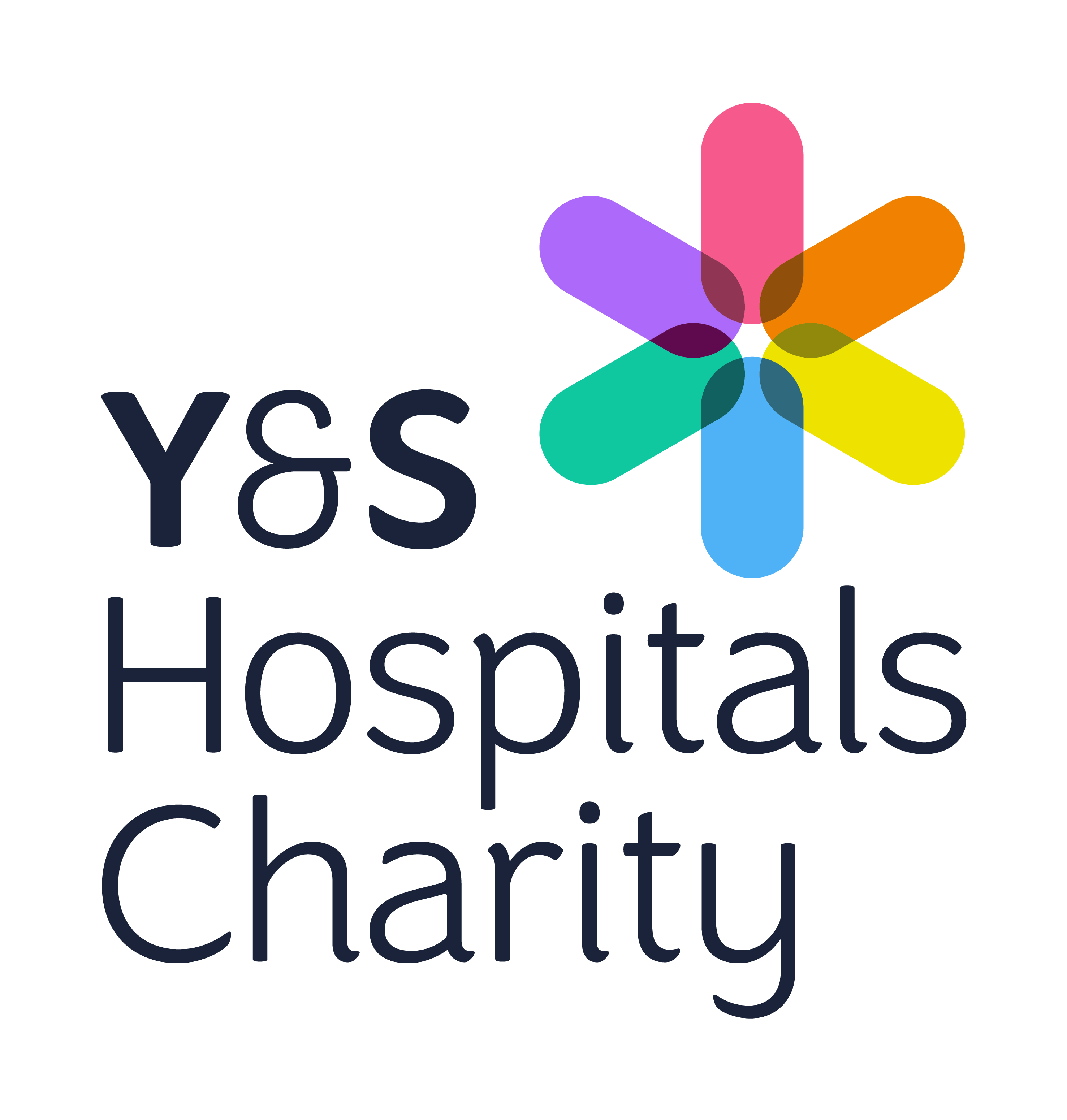Laboratory Medicine
General Information / Histology - Specimen Collection and Transport Advice
IMPORTANT: Ensure the sample is correctly contained in the container and all details are completed.
Histology samples MUST NOT be placed in the Air Tube System for Transport
On both the York and Scarborough sites specimens should be sent to the department accompanied by a completed request form as soon as practicable after removal. Medium and small sized specimens should be put in containers of appropriate size containing a suitable volume of fixative (ideally some ten times more than the volume of specimen) and stored at ambient temperature out of direct sunlight. The pre-filled formalin pots are obtainable from the Pathology Department at York or Pathology Stores at Scarborough. All small biopsies (e.g. endoscopic, needle core biopsies) should be placed in biopsy capsules. The number of biopsies should ideally be stated on the request form. Biopsy capsules supplies are available from the Pathology Department at York or Pathology Stores at Scarborough. Please contact the Histology department at York for advice where any doubt exists.
On the York Hospital site fresh specimens from theatres must be double bagged, with a patient identification label attached to the inner bag. Place the Histology request form in another clear bag and place both the specimen and the request form in to another bag and knot it. These specimens are kept in the theatres’ fridges prior to collection by the porters. All fresh specimens should be delivered to the Microbiology department in the theatre tins provided. Care must be taken in the transportation of all such specimens and they must be handled as potentially infectious.
On the Scarborough Hospital site fresh specimens from theatres (that are too large to fit in pre-filled pots and also placenta specimens from Delivery) must be vacuum packed in to an appropriately sized bag using the TissueSafe machine in theatres. A patient identification label is affixed to the bag and the request form placed in to the pocket on the bag. These should be kept in the theatre fridge until delivery to pathology. Specimens can be kept up to 72 hours at 4°C. If a specimen is too big to fit in the TissueSafe or there is a machine failure a small stock of formalin and buckets are available from pathology stores to be used in the short term.
Fixatives and Specimen Containers
- Routine Histology specimens: Containers of 10% buffered formalin should be used. Containers of various sizes are available from the laboratory.
- Immunofluorescence: Petri dishes with saline soaked tissue (York hospital only) and containers of Zeus tissue fixative should be used for all other locations
- Medical renal biopsies: Saline
- Testicular biopsies: Containers of Bouin’s Fixative should be used.
- Biopsy capsules should be used for the secure transport of small biopsies.
When used accordance with the safety data sheets provided, and in conjunction with the appropriate use of Personal Protective Equipment, the fixatives outlined below present a low risk to staff. In the unlikely event of any formalin spillages within normal working hours please contact the histology laboratory on 5728.
Outside normal working hours spillages should be absorbed with inert, damp non-combustible material, then flush the area with water. Absorb small quantities with paper towels and evaporate in a safe place. Allow sufficient time for vapours to completely clear, and then place the paper towels in a clinical waste bag away from combustible material.
Storage
Formalin pots and buckets should be stored at room temperature in a dry well ventilated area. Keep containers securely closed.
Disposal
Out of date formalin pots should be returned to laboratory medicine for disposal.
Health and Safety
Formalin is harmful if swallowed., may cause an allergic skin reaction., suspected of causing genetic defects and may cause cancer.
Wear protective gloves/ protective clothing/ eye protection/ face protection.
First Aid Measures
EYES Wash eyes immediately with plenty of water whilst lifting eyelids. Seek medical attention immediately. Continue to rinse.
SKIN Remove affected person from source of contamination and immediately flush contaminated skin with plenty of water. If clothing soaked through, remove it immediately and flush skin with water. Should irritation persist seek medical attention immediately
INGESTION Never make an unconscious person vomit or drink fluid. Let affected person drink lots of water immediately in order to dilute the swallowed liquid. After the liquid has swallowed try to induce vomiting.
INHALATION Move the exposed person to fresh air immediately. If breathing has stopped, perform artificial respiration immediately. Keep the affected person warm and at rest whilst seeking medical attention.
Frozen Sections (York only)
These should be requested by telephoning the Histology Laboratory at least 24 hours in advance. The specimen should be received fresh and delivered directly to the laboratory. The procedure takes approximately 20 minutes from receipt of the specimen to the telephoned report. If several frozen sections are required (e.g. for the exclusion of malignancy in lymph nodes), each separate specimen will take a further 10 to 15 minutes. The extension number to which the report should be telephoned MUST be clearly stated on the request form to prevent any delay.
Please note: High risk/ danger of infection samples will not be accepted for this investigation, for clarity this includes COVID-19.
Lymph Nodes
Lymph nodes removed for suspected lymphoma should be sent to the laboratory immediately in a fresh unfixed state. The laboratory must be informed that a specimen is to be taken to ensure staff are available to deal with the specimen immediately. Out of hours these specimens should be refrigerated. Additional information can be found at on the HMDS website.
Needle cores of lymph nodes should be sent to Histopathology in formalin.
HMDS will accept fresh tissue during the COVID-19 pandemic however; positive or suspected COVID-19 must be clearly labelled on the request form and specimen pot.
For more information on handling of HMDS specimens Click Here
Skin Biopsies for Immunofluorescence (York only)
Notice is required for immunofluorescence. The specimen should arrive in a Petri dish, moistened with saline. If it is sent from another hospital site it should be placed in Zeus tissue fixative.
Please note: High risk/ danger of infection samples will not be accepted for this investigation. Samples will not be accepted from known or suspected COVID-19 patients for immunofluorescence investigation.
Skin Biopsies for Marker Studies
Notice is required for marker studies. For more information on handling of Marker studies specimens Click Here
Please note: High risk or danger on infection samples must be clearly labeled on the request form and the pot.
Renal biopsies
When booking the specimen the following details are required: Patient name, DOB, Hospital number, Consultant, Date and time of biopsy, degree of urgency, and details as to whether it is a native or transplant biopsy.
Renal biopsies should be placed in a pot of saline and sent to the laboratory immediately where it will be dissected and placed in the appropriate solutions.
Please note: High risk/ danger of infection tissue will not be handled by laboratory staff. By prior arrangement specimen pots can be prepared and collected from Pathology Specimen Reception. Tissue cores can be placed into the pre-prepared pots prior to transport to Histopathology.
Renal biopsy specimens will be accepted during the COVID-19 pandemic in saline.
Specimens that are received into the Histopathology Department at St James's Hospital, Leeds after 12:30pm will not receive a same day diagnosis. Urgent specimens need to arrive in the Histology department no later than 11:15am to be dealt with the same day. The requesting doctor must ring St James's Hospital, Leeds to inform them of any renal biopsies on 0113 20677898 or 0113 2067530.
Testicular biopsies
Notice is required. Bouin’s fixative will be provided. The specimen should be sent immediately.
Muscle biopsies
These specimens require advance notification on 0113 2064710. They should be sent by taxi directly to Block 32, Chancellor Wing, St James's University Hospital, Leeds. The muscle biopsy should be wrapped in saline moistened gauze and placed in a sterile specimen pot and labelled appropriately.
Placenta Specimens
Please ensure there is enough information to instruct the Histopathology department how to triage the placenta:
Send to Leeds for histology / for storage / post mortem [accepted/declined/undecided].
Placentas for storage are kept for 4 weeks and then disposed of. If a stored placenta needs to be sent to Leeds for histological investigation or post mortem please telephone the histopathology department.
York: These specimens should be placed in the clear plastic bags provided by main theatres (swab bags). Please do not use the bags labelled ‘pathology specimens’ as they are prone to leak. The placenta must be placed in one bag and the top of the bag knotted. A patient identification label must be placed on this bag. Place the Histology request form in another clear bag and place both the placenta and the request form in to another bag and knot it. During working hours the bagged placenta is then placed in a white bucket and sent to the laboratory via a porter (buckets are obtained from the Histology department). Out of hours the specimen is refrigerated and sent as above the following day. If the placenta is too large to fit in to a bag it is placed directly in to the bucket with the lid securely placed on top. The patient identification label is placed on the outside of the bucket and the bagged request form is securely attached to the bucket lid.
Scarborough: Placenta specimens are accepted from the Scarborough site, they are vacuum packed and transported to the York site via Scarborough specimen reception.
Cytogenetics (York only)
Specimens should be sent directly to the Histopathology Department in saline, accompanied by a Cytogenetics request form. Samples received in formalin cannot undergo karyotyping investigations.
For more information on handling of Marker studies specimens: Click Here
Please note: Known or suspected danger of infection samples must be clearly labelled. Known or suspected COVID-19 samples will not be accepted.
Web page 46 last updated: 21/11/2022
Advice for Requesters - Cervical Cytology
How to Send Samples to the Lab
Advice for Requestors - Immunology
Advice for Requesters- Microbiology
Guidance on test interpretation- Clinical Biochemistry
Transportation of Samples and Postage
High Risk/Danger of Infection Samples
Request form and specimen labelling






